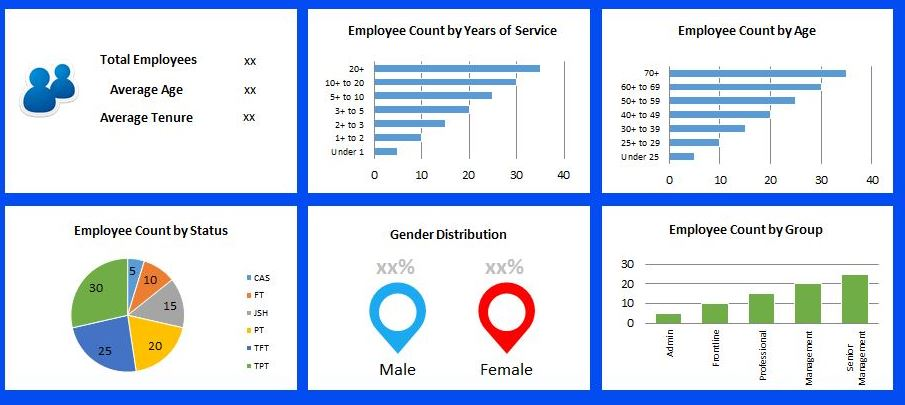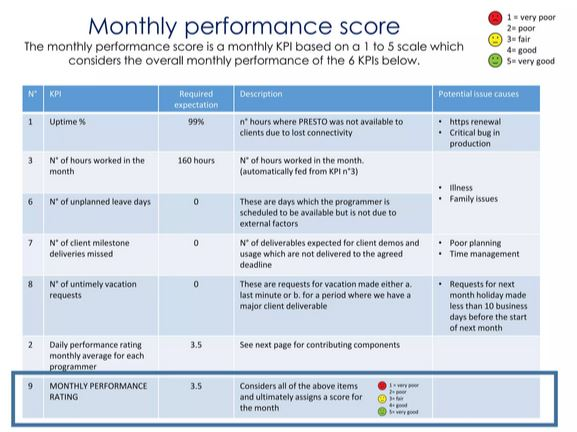Creating an HR monthly report template is a key tool for tracking a company’s workforce health, employee engagement, and compliance with policies.
Such a report consolidates data, insights, and key HR metrics into one document, providing management with a clear, actionable overview.
With a structured report template, HR teams can consistently monitor critical factors like recruitment, retention, training, and policy compliance.
This monthly summary is invaluable for assessing workforce trends, identifying improvement areas, and supporting strategic planning. Here’s an in-depth look at five core components that every effective HR monthly report should include.
5 Major Components of an HR Monthly Report, Brief Checklist
An effective HR monthly report template is comprehensive and provides insights into various workforce conditions.
Below are the essential components every HR team should cover to ensure a balanced view of employee metrics, recruitment, training, engagement, and compliance.
1. Employee Metrics
Headcount : Headcount offers a clear view of the total workforce, tracking the number of employees, recent hires, and separations within the reporting period. This metric highlights growth, stability, or reductions in the company’s workforce.
Turnover Rate : The turnover rate is the percentage of employees who leave the organization, divided into voluntary and involuntary separations. Monitoring turnover helps assess workforce stability and identify departments that may require retention strategies.
Retention Rate : This metric indicates the percentage of employees who stay with the company over a defined period. A high retention rate often reflects strong employee satisfaction and a supportive work environment, crucial for long-term business success.
2. Recruitment and Staffing
Open Positions : Tracking open positions helps gauge hiring demands and evaluate the efficiency of recruitment efforts. It provides insight into which roles are consistently in demand and identifies gaps within teams.
Time to Fill : Time to fill refers to the average duration taken to recruit for open positions. This metric helps HR assess the speed and efficiency of hiring processes, with shorter times often indicating effective recruiting methods.
Sources of Hire : Analyzing sources of hire reveals the most successful channels, whether job boards, referrals, or social media. This insight can optimize recruitment budgets by focusing on channels that yield the best hires.
Learn more about how this process works on HR recruitment strategy.
3. Training and Development
Training Hours : The total training hours show the company’s commitment to employee growth and skill development. Higher training hours reflect investment in workforce capability, fostering productivity and adaptability.
Participation Rates : Participation rates in training programs show employee engagement with development opportunities. Tracking this rate helps HR teams understand which programs are effective and where improvements may be needed.
Skill Development Metrics : Skill development metrics measure the impact of training, highlighting skills acquired or improved. This data ensures training programs align with organizational goals and meet employee development needs.
4. Employee Engagement and Satisfaction
Survey Results :Survey results summarize feedback on engagement or satisfaction, giving a snapshot of employee sentiment. These insights help HR address areas needing improvement in work culture and team morale.
Participation Rates : Participation rates in engagement initiatives indicate employees’ interest in workplace activities, showing their level of involvement in the company’s cultural and social programs.
Feedback Trends : Analyzing feedback trends helps HR understand patterns in employee sentiment, offering actionable insights for policy improvements and a positive workplace culture.
Read more: 3 HR Survey Tools for Employees, Our Best Recommendation
5. Compliance and Policies
Policy Updates: Regular policy updates keep the workforce informed of any changes in HR policies or procedures. This ensures that employees remain aligned with company standards and legal requirements.
Compliance Issues: A summary of compliance-related incidents or concerns is essential to avoid legal risks and maintain ethical standards. Tracking these issues also supports transparent reporting and continuous improvement in compliance practices.
Benefits of Creating HR Monthly Reports
Why bother creating HR monthly report template? Good questions, here are several benefits you can get:
Data Insights: Provides critical data for informed decisions and trend analysis.
Accountability: Holds HR accountable for meeting goals and aligning with organizational objectives
Transparency: Keeps stakeholders informed and encourages feedback for improvements
Understanding Sentiment: Identifies areas for improvement in employee satisfaction and retention
Tracking Compliance: Assists in monitoring adherence to labor laws and identifying potential risks
So, how far along is your report creation progress? To make things simpler, you might just download HR monthly report template. Download the materials from our website and customize your own.


